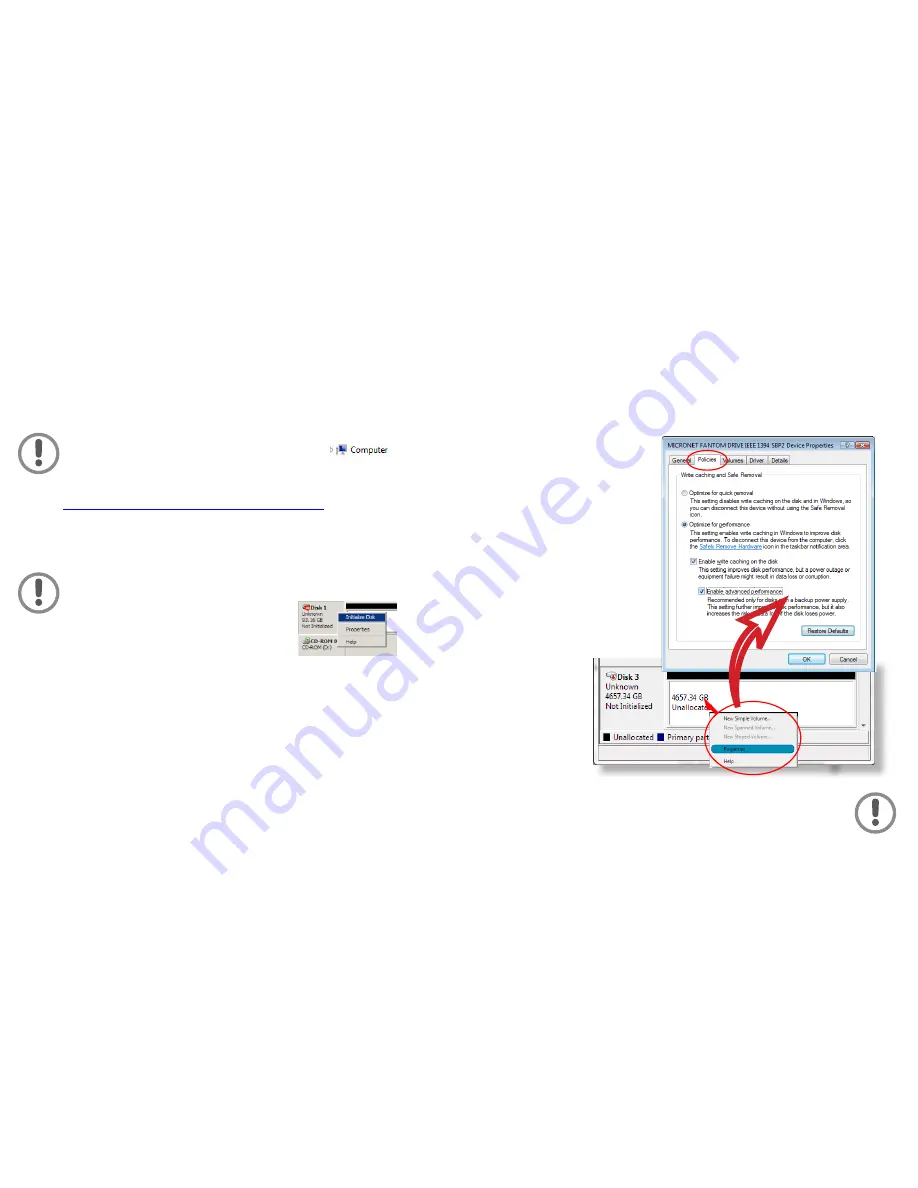
Formatting the drive in
Windows Hosts
1. Open the disk management console. A list of the attached
drives and their respective volumes will appear. Select the
G-Force3 Disk.
The Disk Management Console can be accessed by
right-clicking on the "My Computer" icon (
)
and selecting "Manage" from the drop down menu. Disk
Management is found under "Storage" in the resultant
window. For an illustrated guide, please see
http://www.fantomdrives.com/support/faqs
2. Right-click on the drive letter and select Format in the
pop-up menu. The Format dialog box will appear.
If the hard disk is not signed for use, the New Partition
option is unavailable (superimposed no-entry icon). In this
case a signature can be written on
the hard drive by right clicking on the
disk description window and selecting
"Initialize Disk".
3. Under Capacity, verify the drive capacity. It should be close
to the stated capacity of your drive in gigabytes.
4. In the File System pop-up menu, select NTFS. The default
formatting option is full format. A full format will fully verify
the disk media. A Quick format is quick, but will do less
verifying of the drive than a full format. Click Start. Once
the format process is complete, your external hard drive is
ready to use.
8
9
Optimizing Windows Caching Algorithm
By default, Windows XP optimizes caching for performance
on external drives. Windows Vista and 7 optimize caching
for quick removal. As a result, Windows XP appears to have
faster access to external disks but at a greater risk of data
corruption and loss. To change Windows' caching algorithm,
open the disk management
console (as described on
page 8) on your system
drive. A list of the attached
drives and their respective
volumes
will
appear.
Right-click on the Fantom
external disk in the disk
list and select properties.
Select the Policies Tab
near the top left of the
window, and click your
desired optimization level.
press OK when finished,
and you may close the disk
management applet.
Optimizing for performance can greatly enhance the
throughput of your disk but is much more vulnerable
to data loss! Make sure to have appropriate backup
strategies before enabling this feature!










